The ocean as ally in climate protection: How does ocean alkalinity enhancement affect marine life?
Multi-week experiment of the international research project Ocean Alk-Align starts in Kiel
The goal of limiting global warming to ideally below 1.5 degrees Celsius declared in the Paris Climate Agreement and reducing associated risks of climate change is a generational task that cannot be accomplished by reducing greenhouse gas emissions alone. In addition, measures must also be considered to actively remove carbon dioxide (CO2) from the atmosphere from unavoidable residual emissions. One of the approaches currently being discussed is Ocean Alkalinity Enhancement (OAE): An addition of certain minerals would increase the capacity of seawater to bind acid and absorb carbon dioxide from the atmosphere. At the same time, it is able to counteract ocean acidification, a change in ocean chemistry, that particularly affects calcifying organisms. Ocean Alkaline Enhancement mimics the weathering of rocks. However, while this process has kept the Earth's climate largely stable over the past billions of years, carbon dioxide input caused by humans is about a hundred times too fast to be compensated for by natural weathering. Studies should therefore reveal to what extent the effect of weathering can be accelerated accordingly.
But how does the addition of minerals affect life at the base of the marine food web? How do microalgae, small crustaceans and other plankton react? How do the elemental cycles in the ocean change? An experiment led by GEOMAR Helmholtz Centre for Ocean Research Kiel that starts today, helps to address these and other unanswered questions. It is the first of three multi-week experiments that will be carried out in the Kiel Fjord in different seasons. The work is part of the international research project Ocean Alk-Align coordinated by the University of Dalhousie in Halifax, Canada.
For their investigations, the researchers set up a floating test facility at the pier in front of the Kiel Aquarium: Twelve enclosed tanks, known as mesocosms, each isolate 8,000 litres of fjord water along with its phyto- and zooplankton. The environmental conditions in the mesocosms are the same as in the surrounding fjord – but there is no exchange of water. Five mesocosms receive an addition of slaked lime (calcium hydroxide), and in five brucite (magnesium hydroxide) is added, each in different quantities. One mesocosm per test series serves as a control without added minerals. Unlike in previous experiments, the minerals are not added as a solution but as rock powder, which corresponds to the most likely form of application on a larger scale. Sampling, measurements and analyses will take place regularly for about a month to monitor microalgal growth, zooplankton development and various other processes.
“In view of the increasing number of start-ups that build their business models on selling CO2 certificates for Ocean Alkalinity Enhancement, there is an urgent need for research about potential risks for marine life”, explains Professor Dr Ulf Riebesell. The head of the research unit Biological Oceanography at GEOMAR coordinates the experiment together with Dr. Kau Schulz, guest scientist from Southern Cross University, Australia. “The aim of our work is to generate a scientifically sound basis for decision-making on the possible use of alkalinity enhancement for active CO2 removal.”
Other approaches of ocean-based carbon dioxide removal that are currently being investigated include the restoration of seagrass meadows, the cultivation of macroalgae and the storage of carbon dioxide in the seabed (carbon capture and storage, CCS). Which measures are ultimately used needs to be decided as part of an overall societal process to mitigate climate change.
“This is the first study on Ocean Alkalinity Enhancement that looks at possible seasonal effects. It is also the first one that uses rock powder instead of pre-dissolved alkalinity. We look forward to finding out more about related effects,” says Dr. Kai Schulz.
The series of experiments involves 36 researchers from a variety of research institutions in Germany, Europe, the United States of America, Canada, Australia and Asia.
“The current experiment and the cooperation with international partners strengthen the expertise of marine research in Kiel on options for marine carbon uptake for climate protection,” emphasises GEOMAR Director Professor Dr Katja Matthes. “It looks at one of several currently discussed approaches to carbon dioxide uptake in the ocean and thus contributes important knowledge to social and political decision-making. In this way, it also complements the findings of the German Marine Research Alliance's research mission 'Marine Carbon Storage as a Pathway to Decarbonisation', CDRmare, which is coordinated at GEOMAR.”
Background: Ocean Alk-Align
Ocean Alk-Align is a research project designed to investigate the efficiency and durability, environmental safety and requirements for monitoring, reporting, and verification (MRV) of Ocean Alkalinity Enhancement in an unbiased approach. It is coordinated by Dalhousie University, Canada. Project partners are GEOMAR, Universität Hamburg and the Universities of Southern Cross and Tasmania, Australia. The project is funded by the Carbon to Sea initiative from the United States of America.
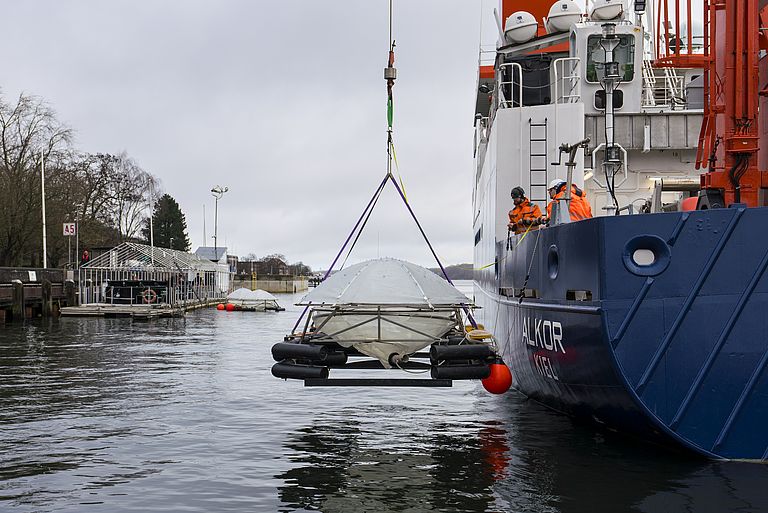
The mesocosms are set up at the pier in front of the Kiel Aquarium for the experiment in the context of the Ocean Alk-Align project. Photo: Sarah Kaehlert, GEOMAR
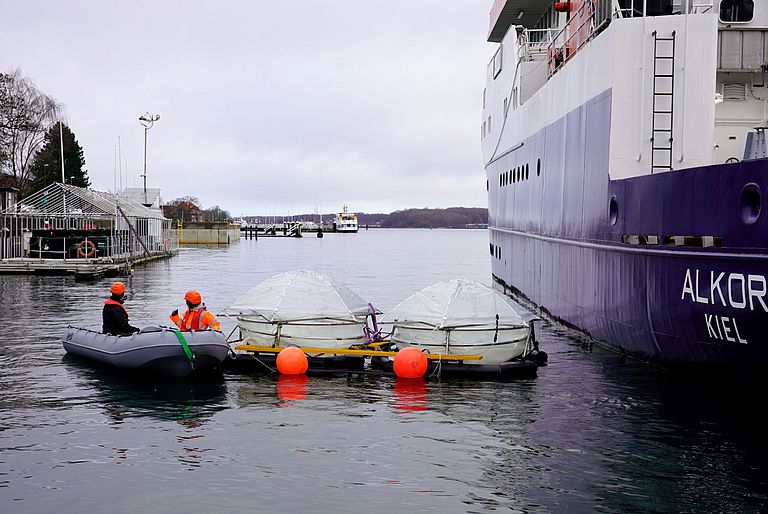
The mesosms are moored at the benthocosm platform. Photo: Sarah Kaehlert, GEOMAR
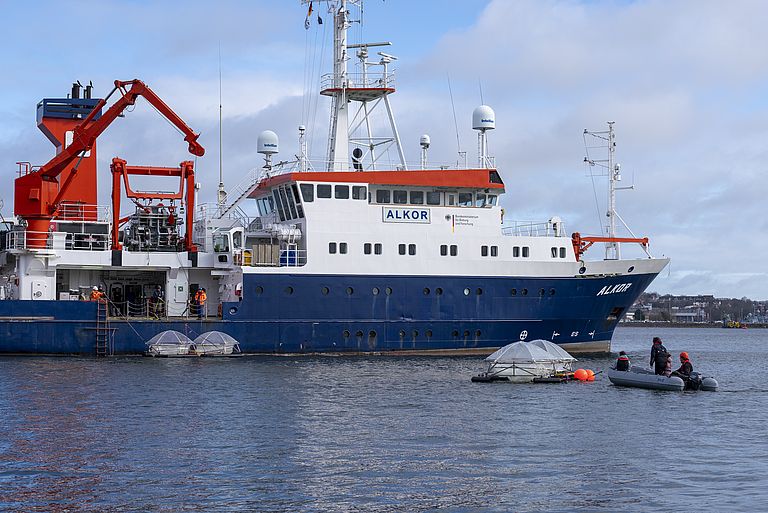
Research vessel ALKOR brought the mesocosms to the experimental site at the Kiel west shore. Photo: Sarah Kaehlert, GEOMAR
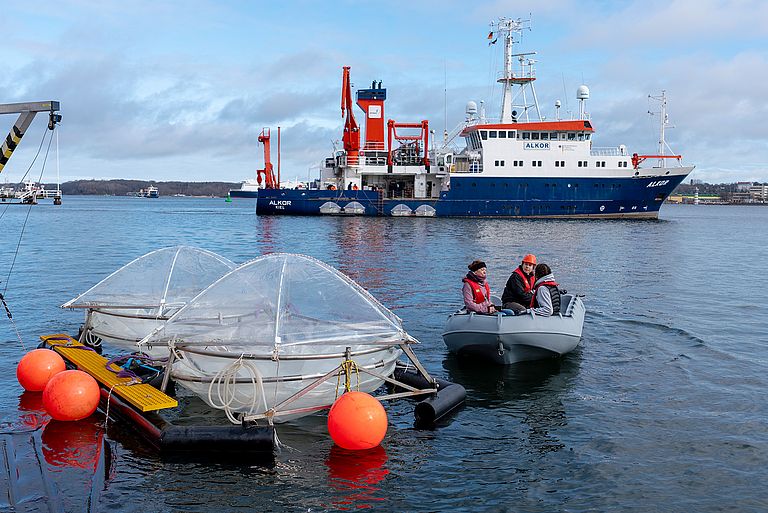
The mesocosms are towed towards the pier by inflatables. Photo: Sarah Kaehlert, GEOMAR
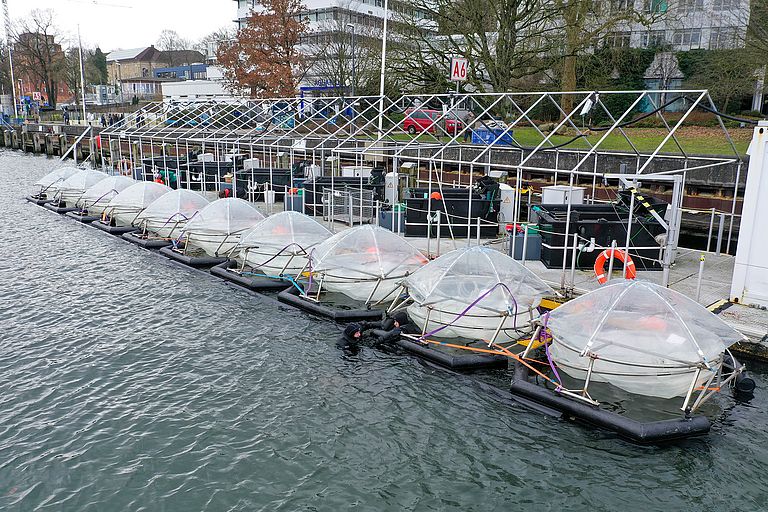
The mesocosms are ready for use. Photo: Sarah Kaehlert, GEOMAR
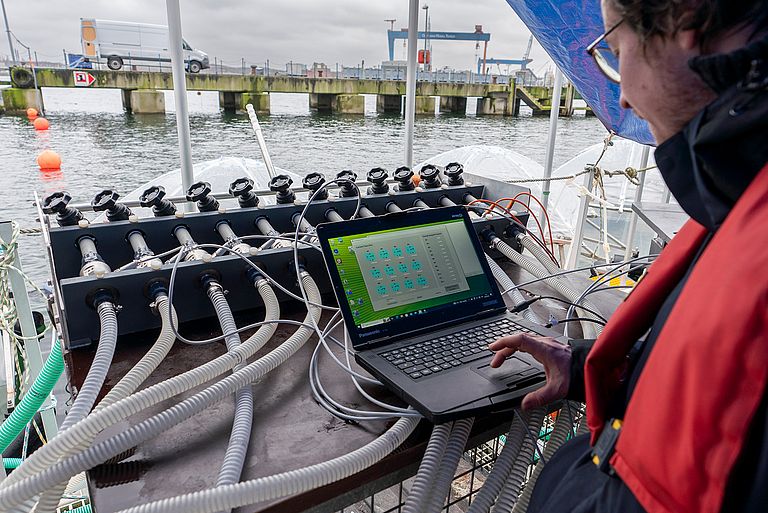
The mesocosms are filled with water from the Kiel Fjord via a tube system. Photo: Sarah Kaehlert, GEOMAR
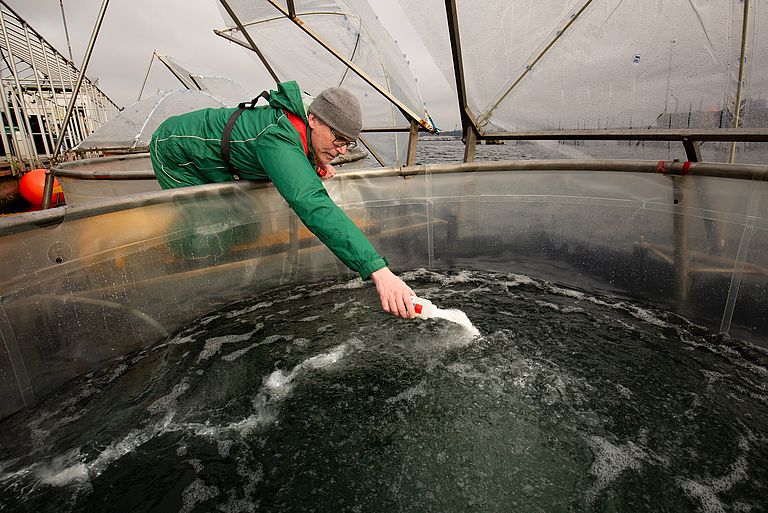
Dr. Kai Schulz adds rock flour to a msocosm at the start of the OceanAlk-Align experiment in the Kiel Fjord. Foto: Michael Sswat, GEOMAR
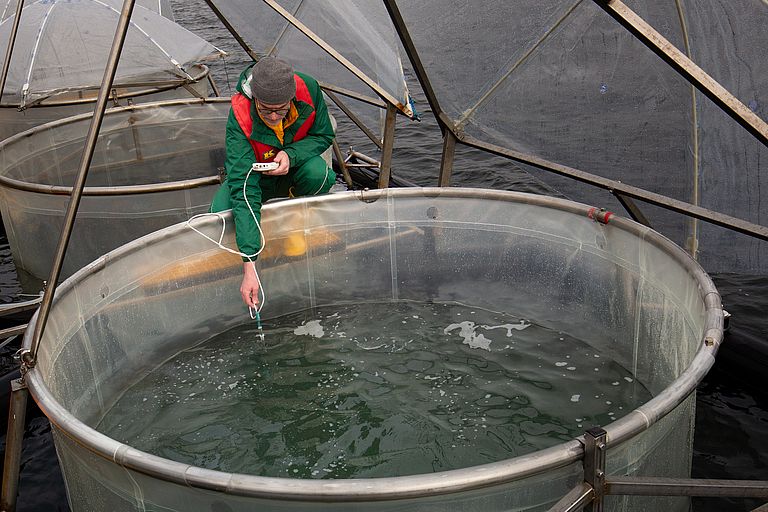
Dr. Kai Schulz measures the pH in one of the mesocosms after the addition of rock flour. Photo: Michael Sswat, GEOMAR
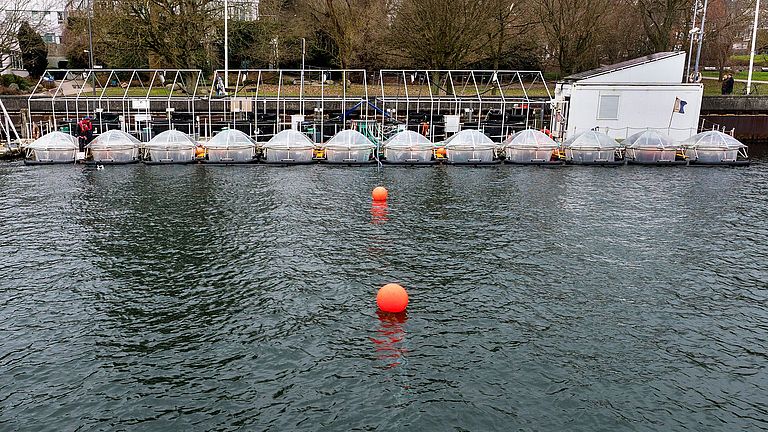
The mesocosms during the filling process. Photo: Sarah Kaehlert, GEOMAR
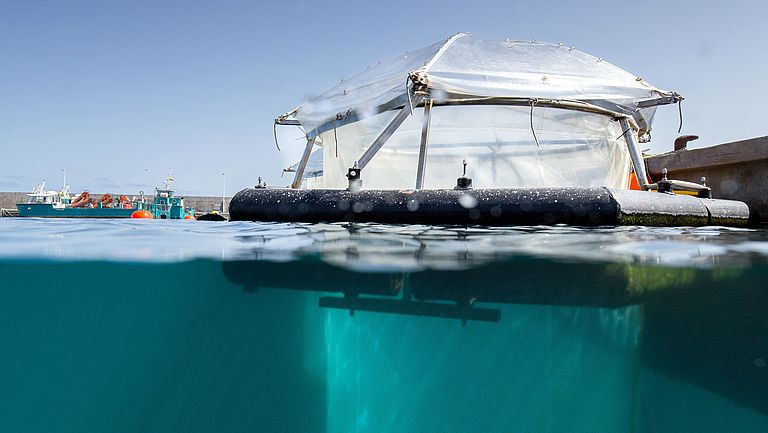
This photo taken during an experiment conducted at the island of Helgoland in 2023 shows the setup that is now also being used in the Kiel Fjord. Photo: Michael Sswat, GEOMAR
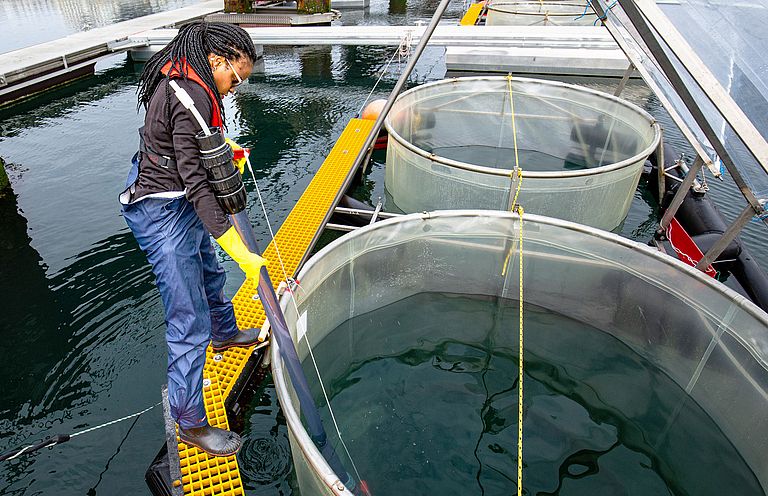
GEOMAR scientist Leila Kittu takes water samples for chlorophyll and nutrient analyses during an experiment at the island of Helgoland in 2023. Photo: Michael Sswat, GEOMAR


